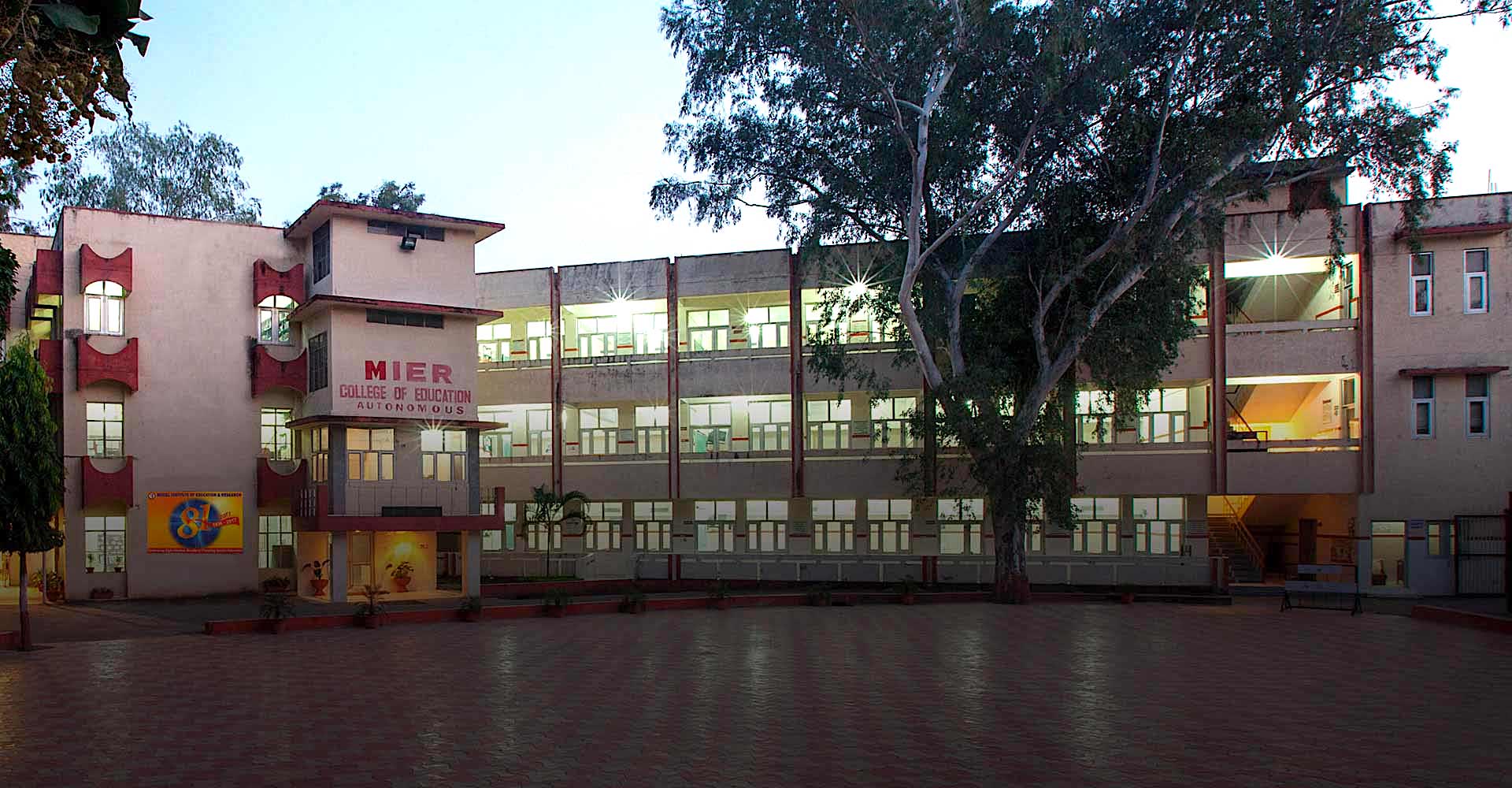The Impact of Academic Life Satisfaction on Achievement Motivation of School-Going Adolescents of South 24 Parganas District
DOI:
https://doi.org/10.52634/mier/2024/v14/i1/2451Keywords:
Academic Life Satisfaction, Achievement Motivation, School-Going AdolescentsAbstract
This study aims to ascertain the impact of academic life satisfaction on the development of achievement motivation of school-going adolescents. The research employs a descriptive survey method within a correlational research design. Data is collected through the Deo-Mohan (1985) Achievement Motivation Scale and the Multidimensional Student’s Life Satisfaction Scale (Huebner, 1994). The sample consists of 576 Bengali-speaking adolescents aged 14-16 years studying in classes IX and X from South 24 Parganas District. The findings reveal significant correlations between academic achievement motivation and multidimensional students’ academic life satisfaction. Adolescents with very high levels of achievement motivation also report very high levels of multidimensional life satisfaction in the case of family, friends, school, and living environment facets, except for academic self-satisfaction, which was at a high level. Adolescents with above-average levels of achievement motivation have very high levels of satisfaction with family and school and high levels of life satisfaction with friends, living environment, and self-satisfaction. Average motivated students have quality life experiences with their family, friends, school, and living environment. However, their achievement motivation was only average due to low academic self-satisfaction. Below-average motivated adolescents exhibit learned helplessness and report low levels of multidimensional life satisfaction.
Downloads
Metrics
Downloads
Published
How to Cite
Issue
Section
License
Copyright (c) 2024 SHYAMAL MISTRY

This work is licensed under a Creative Commons Attribution 4.0 International License.
The articles published in the MIER Journal of Educational Studies, Trends and Practics (MJESTP) are distributed under the terms of the Creative Commons Attribution License (CC BY 4.0), which permits unrestricted use, distribution, and reproduction in any medium, provided the original author and source are credited.
- Copyright on any open access article in the MIER Journal of Educational Studies, Trends and Practics (MJESTP) published by Model Institute of Education and Research (MIER) is retained by the author(s).
- Author(s) grant MIER a license to publish the article and identify himself/herself/themselves as the original publisher.
- Authors also grant any third party the right to use the article freely as long as its integrity is maintained and its original authors, citation details and publisher are identified.
- The Creative Commons Attribution License 4.0 formalizes these and other terms and conditions of publishing articles.
References
Acharya, N., & Joshi, S. (2009). Influence of Parents’ Education on Achievement Motivation of Adolescents. Indian Journal Social Science Researches, 6(1), 72-79.
Ames, C., & Archer, J. (1988). Achievement Goals in the Classroom: Students’ Learning Strategies and Motivation Processes. Journal of Educational Psychology, 80(3), 260-267. https://doi.org/10.1037/0022-0663.80.3.260 DOI: https://doi.org/10.1037//0022-0663.80.3.260
Cenkseven-Onder, F. (2012). Parenting styles and life satisfaction of Turkish adolescents. Educational Research and Reviews, 7(26), 577-584. https://doi.org/10.5897/ERR12.145
Cooley, C. H. (1902). Human nature and the social order. New York: Charles Scribner’s Sons.
Covington, M. V. (1992). Making the grade. Cambridge, England: Cambridge University Press. DOI: https://doi.org/10.1017/CBO9781139173582
Dewan, R., & Singh, B. (2018). Effect of parental involvement on the achievement motivation of primary school students. Review Of Research, 7(7). Retrieved from http://oldror.lbp.world/UploadedData/4580.pdf
Diener, E. (1994). Assessing subjective well-being: progress and opportunities. Social Indicators Research, 31, 103-57. https://doi.org/10.1007/bf01207052 DOI: https://doi.org/10.1007/BF01207052
Diener, E. (2000). Subjective well-being: The science of happiness and a proposal for a national index. American Psychologist, 55, 34-43. https://doi.org/10.1037/0003-066X.55.1.34 DOI: https://doi.org/10.1037//0003-066X.55.1.34
Diener, E., Emmons, R., Larsen, J., & Griffin, S. (1985). The satisfaction with life scale. Journal of Personality Assessment, 49, 71-75. DOI: https://doi.org/10.1207/s15327752jpa4901_13
Diener, E., Lucas, R. E., & Oishi, S. (2002). Subjective well-being. In C. R. Snyder & S. J. Lopez (Eds.), Handbook of positive psychology (p. 63-73). Oxford, UK: Oxford University Press. https://doi.org/10.1093/oxfordhb/9780195187243.013.001
Diener, E., Suh, E. M., Lucas, R. E., & Smith, H. L. (1999). Subjective well-being: Three decades of progress. Psychological Bulletin, 125(2), 276- 302. https://doi.org/10.1037/0033-2909.125.2.276 DOI: https://doi.org/10.1037//0033-2909.125.2.276
Dumitrescu, A. L., Kawamura, M., Dogaru, B. C., Dogaru, C. D., et al. (2010). Relation of achievement motives, satisfaction with life, happiness and oral health in Romanian university students. Oral Health & Preventive Dentistry, 8(1), 15-22. Retrieved from https://pubmed.ncbi.nlm.nih.gov/20372670/
Dweck, C. S., & Leggett, E. L. (1988). A social cognitive approach to motivation and personality. Psychological Review, 95(2), 256-273. https://doi.org/10.1037/0033-295X.95.2.256 DOI: https://doi.org/10.1037//0033-295X.95.2.256
Goodenow, C., & Grady, K. E. (1993). The Relationship of School Belonging and Friends’ Values to Academic Motivation Among Urban Adolescent Students. The Journal of Experimental Education, 62(1), 60-71. https://doi.org/10.1080/00220973.1993.9943831 DOI: https://doi.org/10.1080/00220973.1993.9943831
Grolnick, W. S., Deci, E. L., & Ryan, R. M. (1997). Internalization within the family: The self-determination theory perspective. In J. E. Grusec & L. Kuczynski (Eds.), Parenting and children’s internalization of values: A handbook of contemporary theory (p. 135-161). New York: Wiley.
Hassanzadeh, R., & Mahdinejad, G. (2013). Relationship between Happiness and Achievement Motivation: A Case of University Students. Journal of Elementary Education, 23(1), 53-65.
Hokoda, A., & Fincham, F. D. (1995). Origins of Children’s Helpless and Mastery Achievement Patterns in the Family. Journal of Educational Psychology, 87(3), 375-385. https://doi.org/10.1037/0022-0663.87.3.375 DOI: https://doi.org/10.1037//0022-0663.87.3.375
Huebner, E. S. (1994). Preliminary development and validation of a multidimensional life satisfaction scale for children. Psychological Assessment,6,149-158. https://doi.org/10.1037/1040-3590.6.2.149 DOI: https://doi.org/10.1037//1040-3590.6.2.149
Huebner, E. S. (2004). Research on assessment of life satisfaction of children and adolescents. Social Indicators Research, 66(1-2), 3-33. https://doi.org/10.1023/b:soci.0000007497.57754.e3 DOI: https://doi.org/10.1023/B:SOCI.0000007497.57754.e3
Jacob, M., & Guarnaccia, V. (1997). Motivational and behavioral correlates of life satisfaction in an elderly sample. Psychological Reports, 80, 811- 818. https://doi.org/10.2466/pr0.1997.80.3.811 DOI: https://doi.org/10.2466/pr0.1997.80.3.811
Judge, T. A., Bono, J. E., Erez, A., & Locke, E. A. (2005). Core self-evaluations and job and life satisfaction: The role of self-concordance and goal attainment. Journal of Applied Psychology, 90(2), 257-268. https://doi.org/10.1037/0021-9010.90.2.257 DOI: https://doi.org/10.1037/0021-9010.90.2.257
Karaman, M. A., & Watson, J. C. (2017). Examining associations among achievement motivation, locus of control, academic stress, and life satisfaction: A comparison of U.S. and international undergraduate students. Personality and Individual Difference, 111, 106-110. https://doi.org/10.1016/j.paid.2017.02.006 DOI: https://doi.org/10.1016/j.paid.2017.02.006
Lyubomirsky, S. (2001). Why are some people happier than others? The role of cognitive and motivational processes in well-being. AmericanPsychologist,56(3),239-249. https://doi.org/10.1037/0003-066X.56.3.239 DOI: https://doi.org/10.1037//0003-066X.56.3.239
Mcclelland, D. C. (1958). The use of measures of human motivation in the study of society. In J. W. Atkinson (Ed.), Motives in fantasy, action and society (p. 518-552). Princeton, NJ: D. Van Nostrand Company Inc.
Mcclelland, D. C. (1961). The achieving society. Princeton, NJ: Van Nostrand. DOI: https://doi.org/10.1037/14359-000
Mcclelland, D. C., Atkinson, J. W., Clark, R. A., & Lowell, E. L. (1953). Achievement motive. New York, NY: Appleton-Century-Crofts. DOI: https://doi.org/10.1037/11144-000
Nelson, R. M., & Debacker, T. K. (2008). Achievement motivation in adolescents: The role of peer climate and best friends. The Journal of Experimental Education, 76(2), 170-189. https://doi.org/10.3200/jexe.76.2.170-190 DOI: https://doi.org/10.3200/JEXE.76.2.170-190
Nicholls, J. G. (1979). Quality and equality in intellectual development: The role of motivation in education. American Psychologist, 34, 1071-1084. https://doi.org/10.1037/0003-066X.34.11.1071 DOI: https://doi.org/10.1037//0003-066X.34.11.1071
Nisa, S. U., Qasim, N., & Sehar. (2017). Relationship of achievement motivation and psychological well-being in adolescents. International Journal of Applied Research, 3(12), 102-104.
Park, Y. S., & Kim, U. (2004). Family, Parent-Child Relationship, and Academic Achievement in Korea. International and Cultural Psychology,421-443. https://doi.org/10.1007/0-387-28662-4_19 DOI: https://doi.org/10.1007/0-387-28662-4_19
Pavot, W., & Diener, E. (1993). Review of the satisfaction with life scale. Psychological Assessment, 5(2), 164-172. https://doi.org/10.1037/1040-3590.5.2.164 DOI: https://doi.org/10.1037//1040-3590.5.2.164
Pavot, W., Diener, E., Colvin, D. R., & Sandvik, E. (1991). Further validation of the satisfaction with life scale: Evidence for cross-method convergence of well-being measures. Journal of Personality Assessment, 57(1), 149-161. https://doi.org/10.1207/s15327752jpa5701_17 DOI: https://doi.org/10.1207/s15327752jpa5701_17
Ryan, R. M., & Deci, E. L. (2000). Intrinsic and Extrinsic Motivations: Classic definitions and new directions. Contemporary Educational Psychology,25,54-67. https://doi.org/10.1006/ceps.1999.1020 DOI: https://doi.org/10.1006/ceps.1999.1020
Suldo, S. M., & Huebner, E. S. (2006). Is extremely high life satisfaction during adolescence advantageous? Social Indicators Research, 78, 179- 203. https://doi.org/10.1007/s11205-005-8208-2 DOI: https://doi.org/10.1007/s11205-005-8208-2
Suldo, S. M., Shaffer, E. J., & Riley, K. N. (2008). A social-cognitive-behavioural model of academic predictors of adolescents’ life satisfaction. School Psychology Quarterly, 23(1), 56-69. https://doi.org/10.1037/1045-3830.23.1.56 DOI: https://doi.org/10.1037/1045-3830.23.1.56
Weiner, B. (1985). An attributional theory of achievement motivation and emotion. Psychological Review, 92(4), 548-573. https://doi.org/10.1037/0033-295X.92.4.548 DOI: https://doi.org/10.1037//0033-295X.92.4.548





















